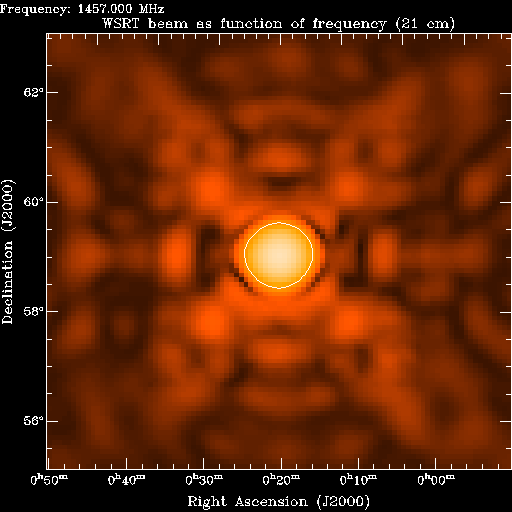Daily Image
05-02-2007WSRT heartbeat
| Submitter: | Tom Oosterloo |
| Description: | The movie shows the shape of the primary beam of a WSRT telescope (for one polarization) as a function of observing frequency. Normally, an image is made of the main lobe (white circle) only, which covers a patch of sky that is roughly equal in size to the full Moon. Bright sources in the sidelobes may cause unwanted artifacts in this image. The size of the main lobe decreases linearly with frequency. However, this effect is overshadowed by a periodic size variation with frequency (the 'heartbeat'), with a period of about 17 MHz. This is probably caused by some kind of standing wave between the apex of the parabolic dish, and the focus box that holds the receiver. Whatever its cause, it produces a position-dependent 17 MHz ripple in the observed spectrum of a source, which is difficult to calibrate. The primary beam of the other polarization shows a simular but different behaviour. The differences cause a position-dependent instrumental polarisation, which is equally difficult to calibrate. These movies for the first time give an overall view of the phaenomenon, which is helpful for developing methods to deal with it. Fortunately, LOFAR will not suffer from this effect, because it has no standing waves. |
| Copyright: | Popping & Braun |
| Tweet |  |
